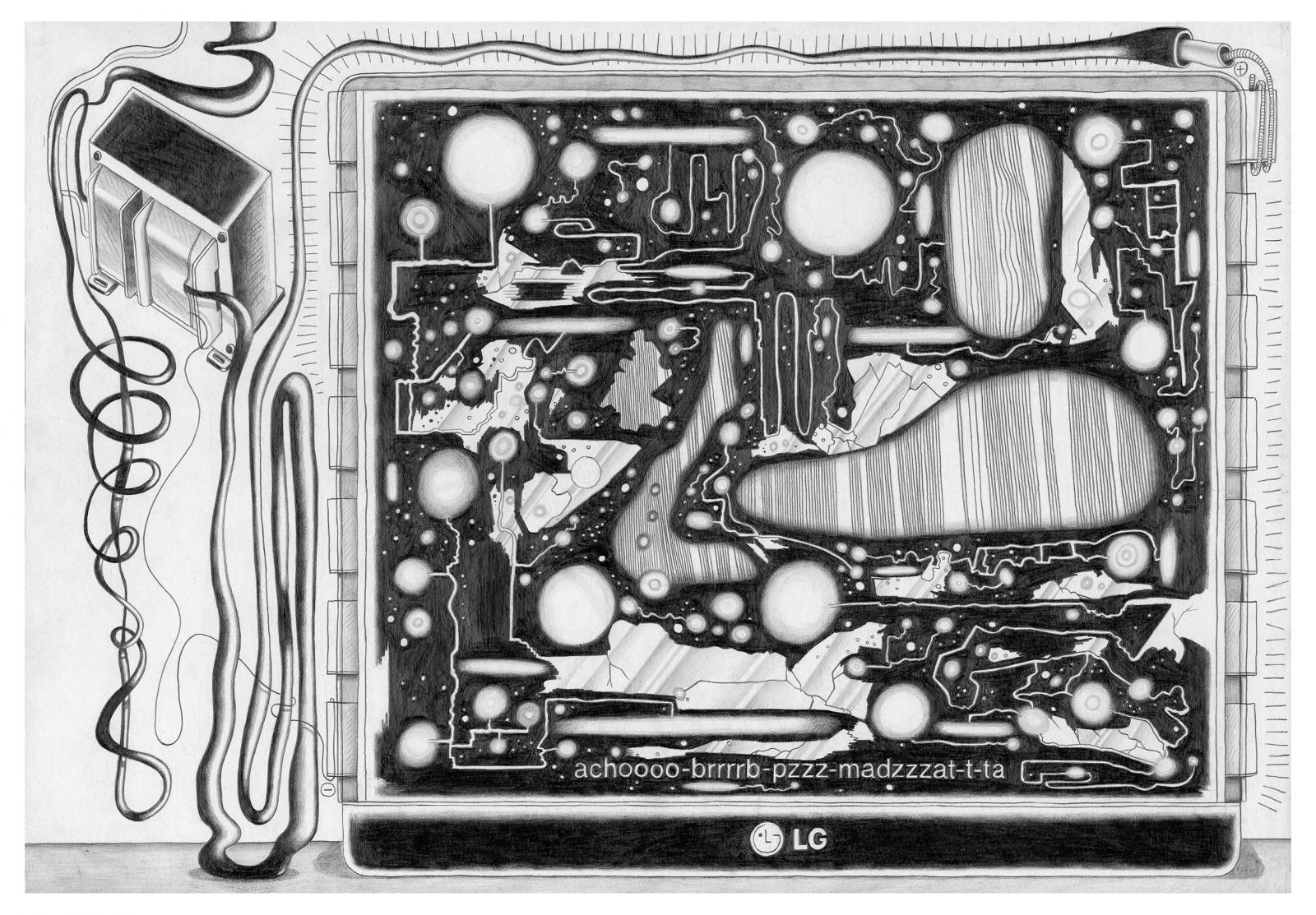Mathew Kneebone
 by Matthew Kneebone
by Matthew Kneebone As part of the Saturday program, Plokta presents:
Mathew Kneebone explores the history of electrical innovation and the cultural mechanisms that we adopt to cope with its change. Opening the Saturday program of Plokta, he considers how visible technologies have become invisible throughout history. The talk correlates technical complexity, malfunction and user anxieties with mythology, superstition and science fiction.
[…] While searching for a stable signal my friend wandered about with his arm held straight up, device in hand. He resembled an antenna—or perhaps more like a semaphore—gesturing an encoded message to an invisible recipient in the sky. His logic, as explained later, was that the signal might strengthen with the distance gained. In other words, the length of his arm would make the difference between the device and the satellite orbiting outside the stratosphere.
Ever since Samuel Morse harnessed electricity to send a telegraph from Washington DC to Baltimore in 1844 it’s been increasingly difficult to define the boundaries of machines. Groundwork for the the first globally connected machine was laid when the transatlantic telegraph line linked the United States to Ireland only twenty years later. Needless to say, our collective sense of technological scale has been further challenged by wireless transmissions relayed by machines in the sky.
 Matthew Kneebone
Matthew Kneebone 